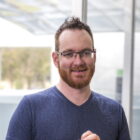Project area/S
- Extragalactic Radio Science
Project Details
At the center of most galaxies is a supermassive black hole; in some galaxies, hot material falling toward the black hole can be launched outward in twin “jets”, moving along the axis of rotation of the black hole at nearly the speed of light. These balloon into enormous radio-bright “lobes” which can be seen billions of light years away. Astronomers are trying to under-stand what kinds of galaxies do this, how often, and how long activity lasts: the life-cycle of radio galaxies. One challenge is that once the jets switch off, the lobes fade quickly, and with-out the right observations, we can miss periods of activity. This means that the dying, or “remnant” stage of radio galaxies is very poorly-studied, with only a few examples known, making calculations of the life cycle impossible. We have selected 40 new candidate remnant radio galaxies and obtained sensitive radio observations using the Very Large Array, a radio tele-scope in the USA. The student will transform the data into de-tailed images of the galaxies, and combined with our existing measurements, model their ages and find out if they are ex-amples of this rare class of objects. If so, this would more than double the number of remnant radio galaxies known, and in combination with the sample from which they were selected, put a new constraint on the activity of supermassive black holes.
Student Attributes
Academic Background
Physics is a requirement; astronomy is desirable.
Computing Skills
Basic command-line scripting and python would be useful.
Training Requirement
We will provide training in radio interferometric data reduction, python, and modeling the ages of radio galaxies.
Project Timeline
- Week 1 Inductions and project introduction
- Week 2 Initial Presentation
- Week 3 Learn radio interferometry and practice data reduction using tutorials
- Week 4 Download and reduce data
- Week 5 Reduce data
- Week 6 Refine images and examine morphology
- Week 7 Measure brightness at different frequencies and create spectra across wide band
- Week 8 Spectral age modeling and comparison to literature
- Week 9 Final Presentation
- Week 10 Final Report
Additional Supervisors
- Dr Chris Riseley (Uni. Bologna)
- Dr Tessa Vernstrom (CSIRO)
